![]() By canceling Mega Man Universe and Mega Man Legends 3, celebrating Mega Man‘s 25th anniversary by giving us more Street Fighter, and driving its own talented creators to make a knockoff Mega Man game because they couldn’t make a real one, Capcom painted itself as a company that either hated its fans or had no idea how to run a business. Yet while Capcom had seemingly abandoned the Blue Bomber, fans were hard at work developing their own homebrew games; Nintendo’s inclusion of Mega Man in the latest Super Smash Bros. was met with great celebration; and Mega Man-inspired games such as Shovel Knight and the just-alluded-to Mighty No. 9 were garnering tremendous attention. If ever there was a time for the Titanium Titan to make a comeback, it was now.
By canceling Mega Man Universe and Mega Man Legends 3, celebrating Mega Man‘s 25th anniversary by giving us more Street Fighter, and driving its own talented creators to make a knockoff Mega Man game because they couldn’t make a real one, Capcom painted itself as a company that either hated its fans or had no idea how to run a business. Yet while Capcom had seemingly abandoned the Blue Bomber, fans were hard at work developing their own homebrew games; Nintendo’s inclusion of Mega Man in the latest Super Smash Bros. was met with great celebration; and Mega Man-inspired games such as Shovel Knight and the just-alluded-to Mighty No. 9 were garnering tremendous attention. If ever there was a time for the Titanium Titan to make a comeback, it was now.
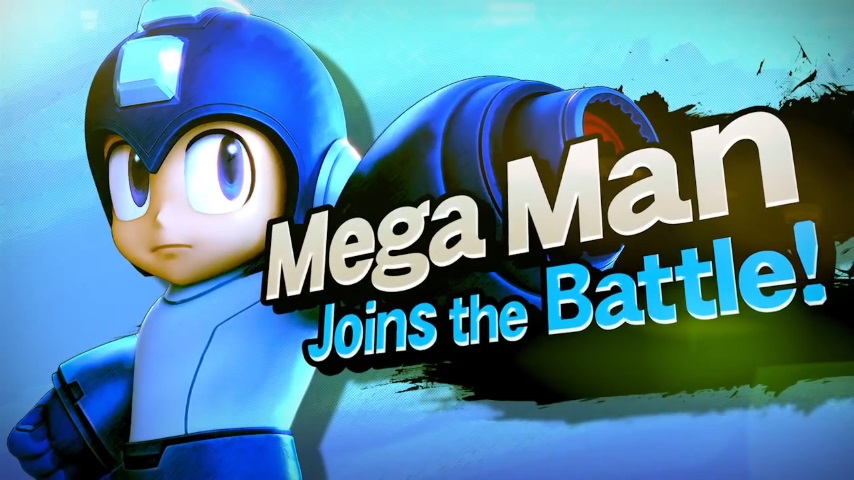 50% of the reason I wanted a Wii U, right here.
50% of the reason I wanted a Wii U, right here.
Capcom took note, but I’m not sure the fans did. Little by little, rare and obscure entries in the Mega Man franchise became available for download, such as Mega Man V (not to be confused with Mega Man 5) and The Misadventures of Tron Bonne. To me, this was Capcom’s way of acknowledging the demand for more Mega Man while still gauging whether the financial risk of developing a new Mega Man game would pay off. But the fan responses I’ve seen usually boil down to, “ABOUT TIME. NOW MAKE A NEW GAME FOR US.” Buncha ingrates.
Capcom’s next move surprised many people, though not necessarily in a good way. A compilation of the first six Mega Man games is all well and good, but when those games are already available for individual download and were collected a decade earlier in the Mega Man Anniversary Collection—alongside four other games that are suspiciously absent here—it’s not unreasonable to start questioning Capcom’s business practices again. But the story I’ve read is that a company called Digital Eclipse approached Capcom and said, “Hey, we’ve got this engine that runs NES games; can we try it out on Mega Man?” So here we are with the Mega Man Legacy Collection.
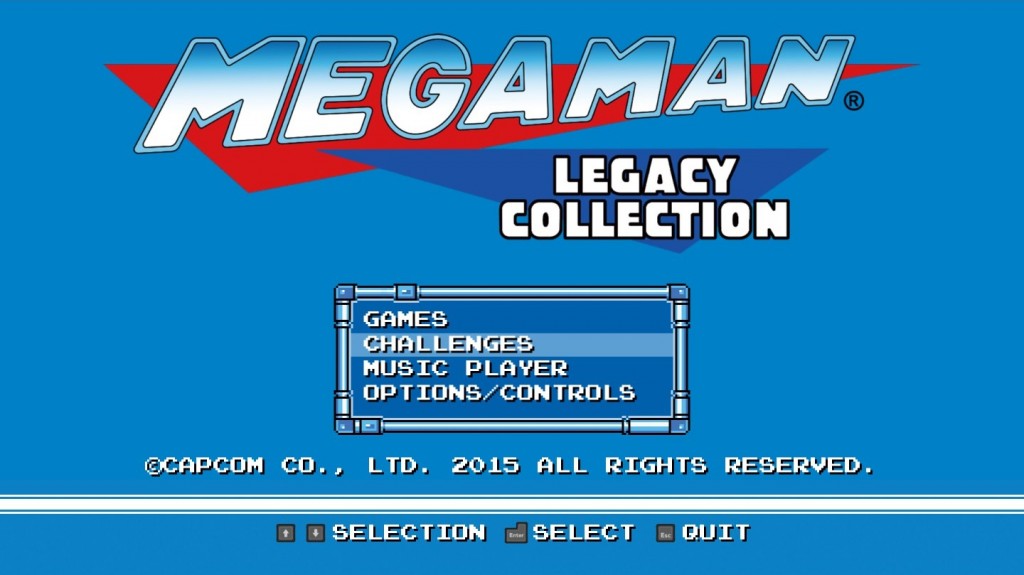 Oh, you wanted a flashy title screen? I thought you said, “Flash game title screen”.
Oh, you wanted a flashy title screen? I thought you said, “Flash game title screen”.
If you want to introduce new players to Mega Man, give them the games everyone agrees on. Any true fan will tell you that at least two or three of the NES Mega Man games are outstanding, and that the worst of them are at least tolerable—good luck getting anyone to say the same about MM7-10. Throw in Achievements, a music player, a database and gallery similar to the Complete Works and Robot Master Field Guide books, a challenge mode that mashes up areas from all six collected games, and online leaderboards that capture replays of your attempts, and you’ve got a compilation that offers something to everyone, at a price ($14.99 at launch) that’s a fraction of what any one of its main attractions really costs. Make it available on Steam, and suddenly you’re reaching a demographic—PC gamers—that either never had the right system to play these games, or deprived you of a profit by emulating them.
Capcom gets more money, new players get a treasure trove that will keep them entertained for hours upon hours, and longtime players who already own everything there is to own will still find something worthwhile in the challenge mode. Everyone wins!
That is, if you design the challenge mode right.
Mega Man Legacy Collection (multiple platforms, 2015)
Admittedly, I only bought the MMLC (as I shall henceforth be abbreviating it) to show Capcom with my money that I wanted more Mega Man. I either own or have little interest in practically everything the collection has to offer—a common complaint among longtime fans, which I suspect may hurt sales; a game is not inherently bad if you are not the target audience, people—but the challenge mode is the one unique element in the collection that had the potential to be an adequate reward for the backer who already has everything, assuming we’re talking about the MMLC as the unconventional Kickstarter campaign for Mega Man X9 that it probably is.
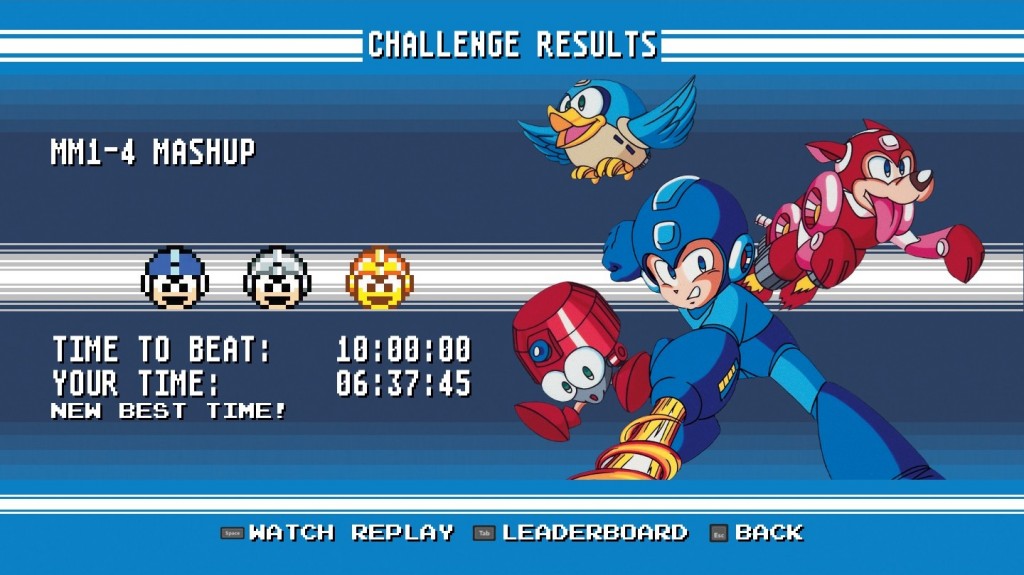 Does getting a gold medal count as a stretch goal?
Does getting a gold medal count as a stretch goal?
Upon hearing that the MMLC‘s challenge mode would be a mashup of the six collected games, I started picturing the Wily Tower subgame of Mega Man: The Wily Wars, the Endless Attack modes of MM9 and MM10, and the various Game Boy games. I was looking forward to riding Rush Jet through Ice Man’s stage, vaporizing Wind Man’s giant pandas with Pharaoh Shot, and dodging Quick Man’s lasers while being chased by Napalm Man’s helicopter goons. I was disappointed to discover that the challenges are simply existing sections of the NES games cut and pasted together, with a teleporter taking you from one section to the next, but I was still excited (albeit less enthusiastically) to see the creative ways these different areas were slammed together.
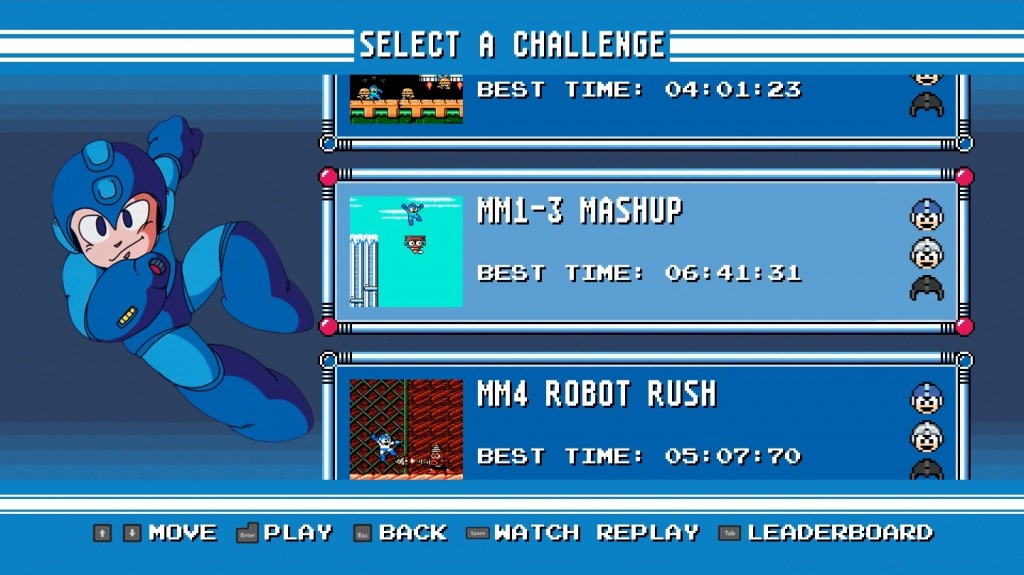 If they wanted to discourage me from trying this challenge, they picked the right screenshot.
If they wanted to discourage me from trying this challenge, they picked the right screenshot.
Unlike Mega Man: Powered Up, which gives you one life (and, frankly, an insufficient amount of weapon energy) to complete each of its perfection-driven challenges, the MMLC gives you infinite lives, meaning you’re almost guaranteed to make it to the end eventually. And unlike MM10, which measures success by whether you’re able to defeat the most obnoxious bosses in the series without getting hit and without using any of the weapons that make a no-damage run feasible, the awards for good performance are entirely time-based. You don’t have to feel like a failure because you couldn’t survive every boss in the game on Hard Mode with a single health bar. You can feel like a hero because the game asked you to defeat all eight robot masters from Mega Man 4 in less than 14 minutes, and it only took you five because you’re just that good. Thus, the MMLC was off to a great start.
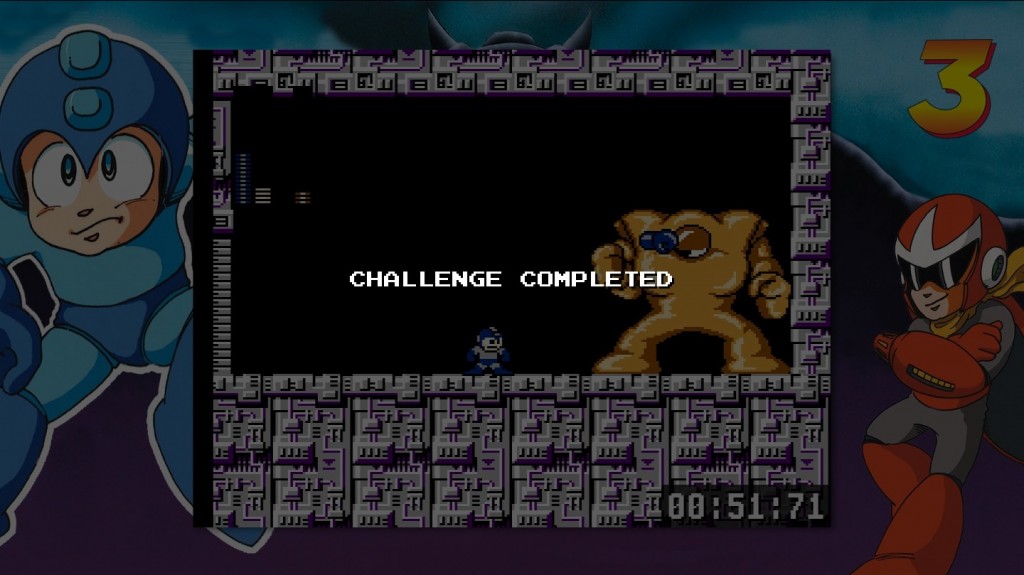 Don’t analyze this screenshot too closely. Being one hit away from death was part of my strategy.
Don’t analyze this screenshot too closely. Being one hit away from death was part of my strategy.
The first few challenges I played were fun. Sure, I know these games inside and out, but there was a fresh challenge in being kept off balance—I never knew what stage was next, or what portion of it I’d need to play. I was thrown into a battle with Elec Man facing the wrong way because I wasn’t given the opportunity to reorient myself on the ladder to his chamber. I was teleported into the third Wily stage of MM2 and found myself immediately falling down the underwater shaft where the walls are lined with spikes. I started the Mecha Dragon fight as the platforms were already in the process of scrolling, resulting in some hilarious wipeouts while trying to figure out the timing required to survive the first second of the challenge. Even the more mundane challenges were interesting, if for no other reason than trying to quickly adapt to the subtle differences in game mechanics and the weapon selection when jumping from one game to the next.
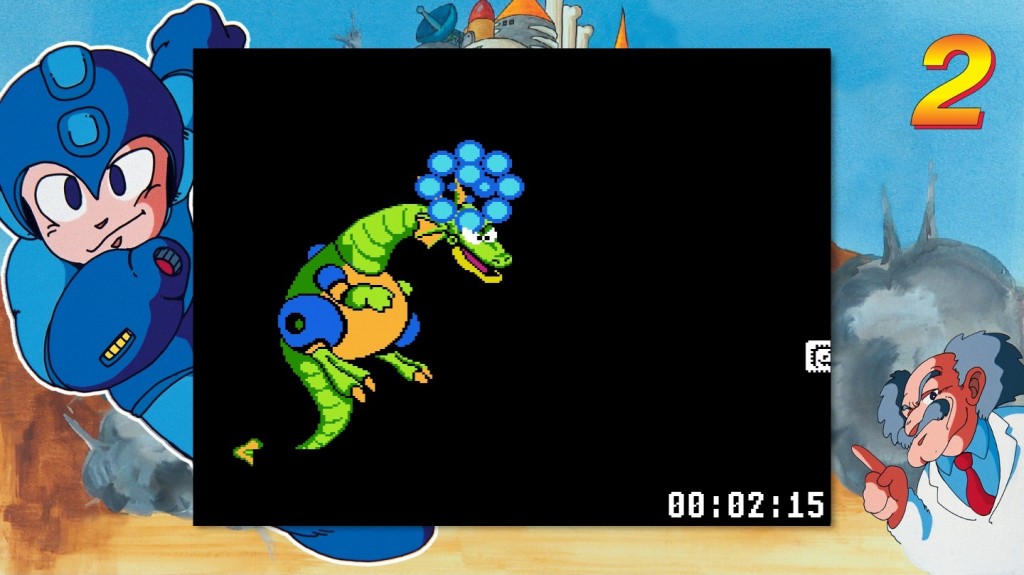 If you’re a professional, your strategy will not involve trying to ride the Mecha Dragon.
If you’re a professional, your strategy will not involve trying to ride the Mecha Dragon.
Similarly, the last few challenges were enjoyably tough: a gauntlet of all the final bosses; a gauntlet of appearing brick challenges; and an insane gauntlet of all 46 robot masters, with a target completion time of 30 minutes if you’re using special weapons and 60 minutes if you’re not. The latter has kept me coming back to try and beat my best time and—for the first time I have ever cared about this—make my mark on the leaderboard. The challenges start and end on a high note, but unfortunately, the whole middle section tends to sag—which is severely problematic when there are around 40 challenges in that middle section.
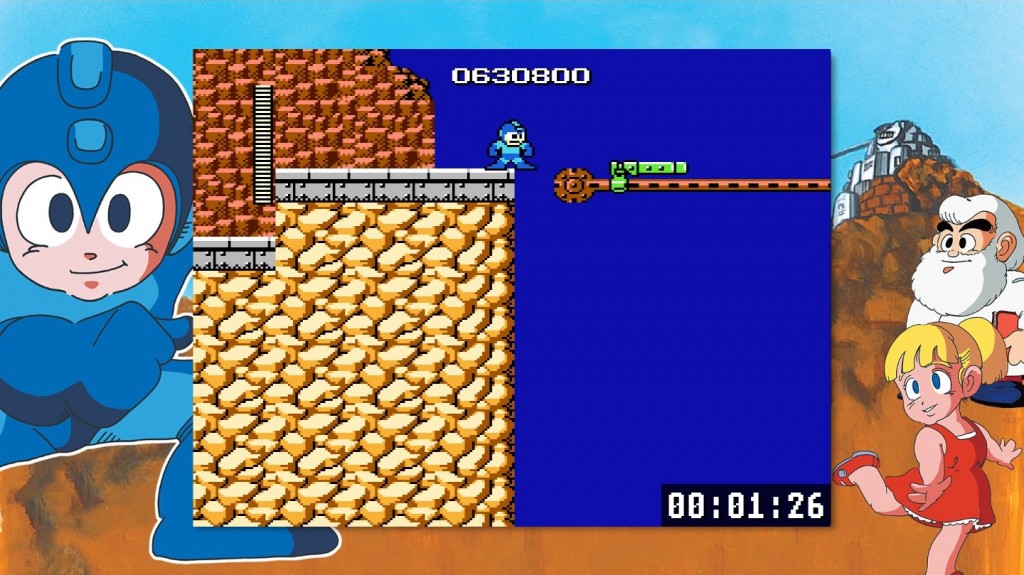 Hello, Guts Man’s stage!
Hello, Guts Man’s stage!
Each of the six NES Mega Man games is longer than the last one, so it would stand to reason that the challenges would feature twice as many sections from MM6 as from MM1—but in fact, it’s just the opposite. The challenges start you off replaying parts of MM1, then MM2 joins the party, then MM3 gets added to the mix, and so on. You don’t have to play the challenges in order, but each of the later challenges is locked until you finish a certain number of the earlier ones. By the time the first segment from MM6 shows up, you’ve basically played through MM1 two or three times. But not all of MM1, mind you: mostly just the part of Ice Man’s stage where the moving platforms drop you into a bottomless pit, the part of Guts Man’s stage where the moving platform drops you into a bottomless pit, the part of the last Wily stage where the moving platform drops you into a spike pit, and two boring screens in the middle of Elec Man’s stage.
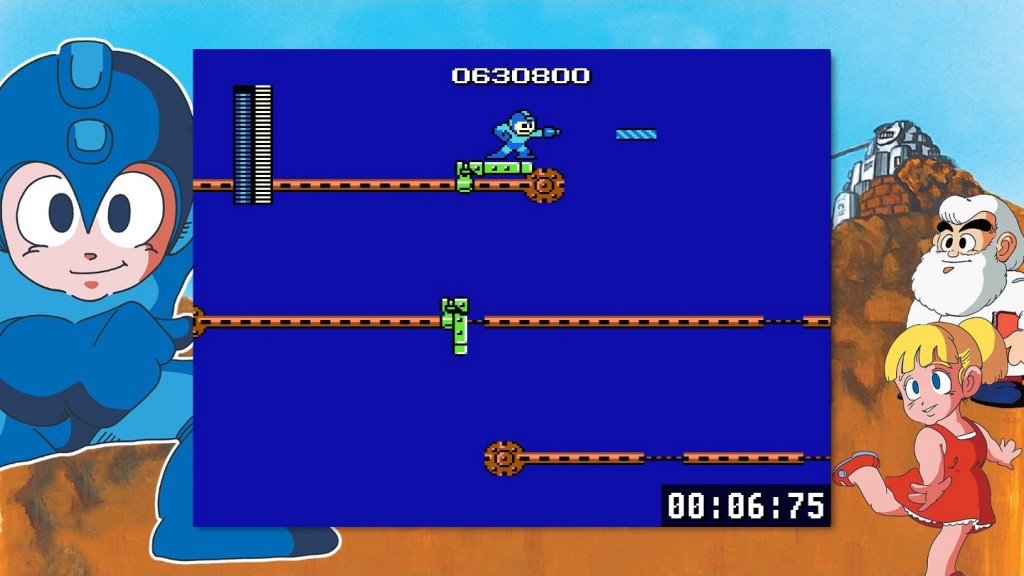 Hi again.
Hi again.
Meanwhile, there are entire stages of the other games with no representation whatsoever—if memory serves (and boss fights notwithstanding), the last Wily stage of MM2, the second Wily stage of MM3, the first Wily stage of MM4, the last Proto Man stage of MM5, and Knight Man’s stage from MM6 are nowhere to be seen. And that’s to say nothing of the other unique and challenging sections that were completely overlooked throughout 50+ different challenges, including the underwater boss of the third Wily stage of MM1, the first half of Flash Man’s stage from MM2, most of Spark Man’s stage (both the original and Doc Robot version) from MM3, Ring Man’s robot hippos from MM4, the jet ski portion of Wave Man’s stage from MM5, and 90% of MM6. OK, so it’s probably more like 75% of MM6, but it feels like 90% when you only get to see about four screens of Yamato Man’s stage because the game is too busy forcing you to relive my first “Sprite Flicker” comic over and over.
 Yeah, we’re not even bothering with this challenge now.
Yeah, we’re not even bothering with this challenge now.
This seems like a bunch of people making their own mashups without consulting with each other. Or, worse yet, it could’ve been the same person who either forgot which sections had been used or who really likes the beginning of Cut Man’s stage. It’s suspicious, too, that the handful of areas you’re continually replaying practically always start and end on the same screens, making “cookie-cutter” a particularly apt description of some of the challenges.
The fact that only a handful of the 50+ challenges have a discernible theme is a substantial oversight as well. We could have easily had a string of underwater stages, a sequence of ice levels, a challenge that’s all platforming and no enemies, a miniboss rush, or challenges consisting of all vertical areas (one where you keep going up; one where you keep going down). If they were really creative, we could’ve had mirror stages where we started at the end and needed to get back to the beginning, or regular stages with the exit teleporter in bizarre places you’d never normally need to access. And even though I like having the full compliment of special weapons available at all times (except in the buster-only challenges), it would have been interesting to see no buster challenges, where you could only use special weapons, or maybe a challenge where you weren’t allowed to shoot at all! So many options, but no, let’s go back to the most horrible part of Crystal Man’s stage again.
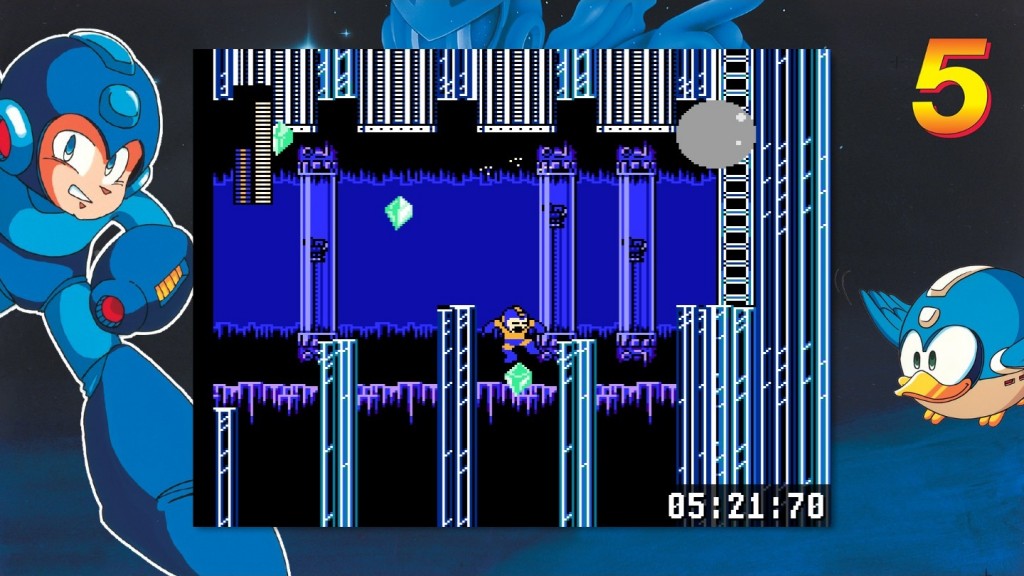 I miss Guts Man.
I miss Guts Man.
The worst part is that the lackluster challenges undermine the credibility of the entire collection. Offering a challenge mode with no new content looks lazy to begin with, but including several dozen challenges with no real theme and minimal variety gives the impression that the developers simply didn’t care and were only padding the game. Despite the handful of great challenges and the incredible value of the overall package, it’s very easy if you’re a longtime fan to spit on the collection. “We deserved better,” I can hear you say. “We asked for a sequel, and you gave us the same games we already own, and not even as many of them as should have been included. Now you’re giving us the same games again and pretending they’re something new by haphazardly cutting them up. We’re not buying it. We’re not buying your stupid collection.”
Fortunately, the majority of people who own the collection seem to like it, but Capcom’s earnest-yet-cautious attempt to start reviving the franchise still stands to backfire terribly, because the fans who want a comeback the most are the ones who want this new Mega Man game the least. Capcom’s design-your-own-challenge contest suggests that someone is paying attention to criticism—or else trying to capitalize on the popularity of Super Mario Maker. The thing is, you can never tell whether a game company is listening to your feedback. But it’s a safe bet that they’ll listen to your money, and I suspect that Mega Man‘s future rests heavily on the success of this collection.
Don’t let the MMLC‘s one big flaw overshadow the whole collection. Don’t let Capcom think you don’t care about Mega Man because you think they don’t care.

As interesting as it is for capcom to FINALLY get any of the Mega Man games on steam (despite there being PC versions of at least Mega Man X4-6), I’ve heard that a lot of people say that it’s crashy and laggy.
I might some year get the LC for the 3ds, as I was already planning on getting MM6 for it as it is my favorite of the series, so getting this for 15 bucks is basically getting the whole series half-off with a couple extra bits tossed in.
But that being said, I’m more inclined to use what few gaming bucks I have for games I don’t already own, such as Shovel Knight or Harmoknight, which are both at the same priee as the collection. For now, I’ll stick to the Anniversary Collection for my classic fix with a “SUPAH FIGHTING ROBOT, DOOT DOOT, MEGA MAN!” chaser.
I’ve logged enough time to have beaten three of the games and played through all the challenges at least once, and in most cases two times (and some even three or four). In that time, the MMLC crashed on me just once, and any control issues I’ve had can be chalked up to an occasionally sticky wireless controller and the quirks of shifting from one game’s mechanics to the next.
I think the lag people complain about is slowdown from too many sprites on the screen…which means the games are authentically reproduced. I would normally agree with you about the gaming bucks and sticking with the Anniversary Collection, but I really do get the sense that there’s a lot riding on the success of this collection, so I hope there’s renewed interest by the time the 3DS version comes out.
update on the 3DS version, it’s coming in February, and the download version is 15 bucks, the physical cart is 30 bucks, and there will be a 50 buck-before-scalping version with a golden megaman amiibo.
another update, apparently capcom went back on their word and the download version is 30 bucks, too, now. I was so irked last night when I found out, as I was like “you know, I’m feelin’ zesty, I think I might get that there legacy collection” and found it listed for full 29.99 price. So now I have literally no reason to get it over just getting Mega Man 6 as a standalone. I already have the anniversary collection, if I feel like playing the games, so no need for me to pay more than what I even paid for the superior collection just to have them portable.
And now it’s 14.99 again, so I dunno what the deal with that pricing was for a bit.